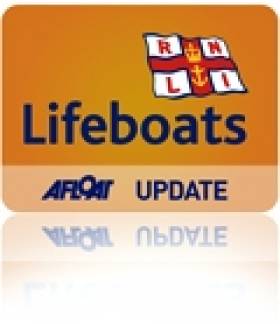Displaying items by tag: lifeoat
#lifeboat – Crosshaven RNLI lifeboat were called upon to assist two vessels within two days.
The first call came on Wednesday afternoon (22 Aug) after a 16' motor boat suffered mechanical failure behind Haulbowline Island. The boat owner had deployed his anchor while awaiting help to arrive. On arrival, the newest recruit to the lifeboat crew, Ian O'Keefe, managed to get the engine started before the lifeboat escorted the vessel to Monkstown Marina.
Last night, Valentia Coast Guard tasked the lifeboat to a 36' yacht, South of Roches Point. The yacht was on passage from the UK, and had suffered both rigging and mechanical failure during the night. The yacht had been drifting for several hours before being able to request assistance. The crew of four were exhausted with one person disabled due to seasickness.
One of the volunteer crew boarded the yacht and checked on the condition of the crew, before setting up a tow with the lifeboat. The casualty vessel was then taken in tow to Crosshaven Boatyard. The Volunteer crew on this service were Mark Bushe (helm) with Bernard Lynch and Vincent Fleming.
Vessels from the Naval service and the Port of Cork also responded to the scene.
























































